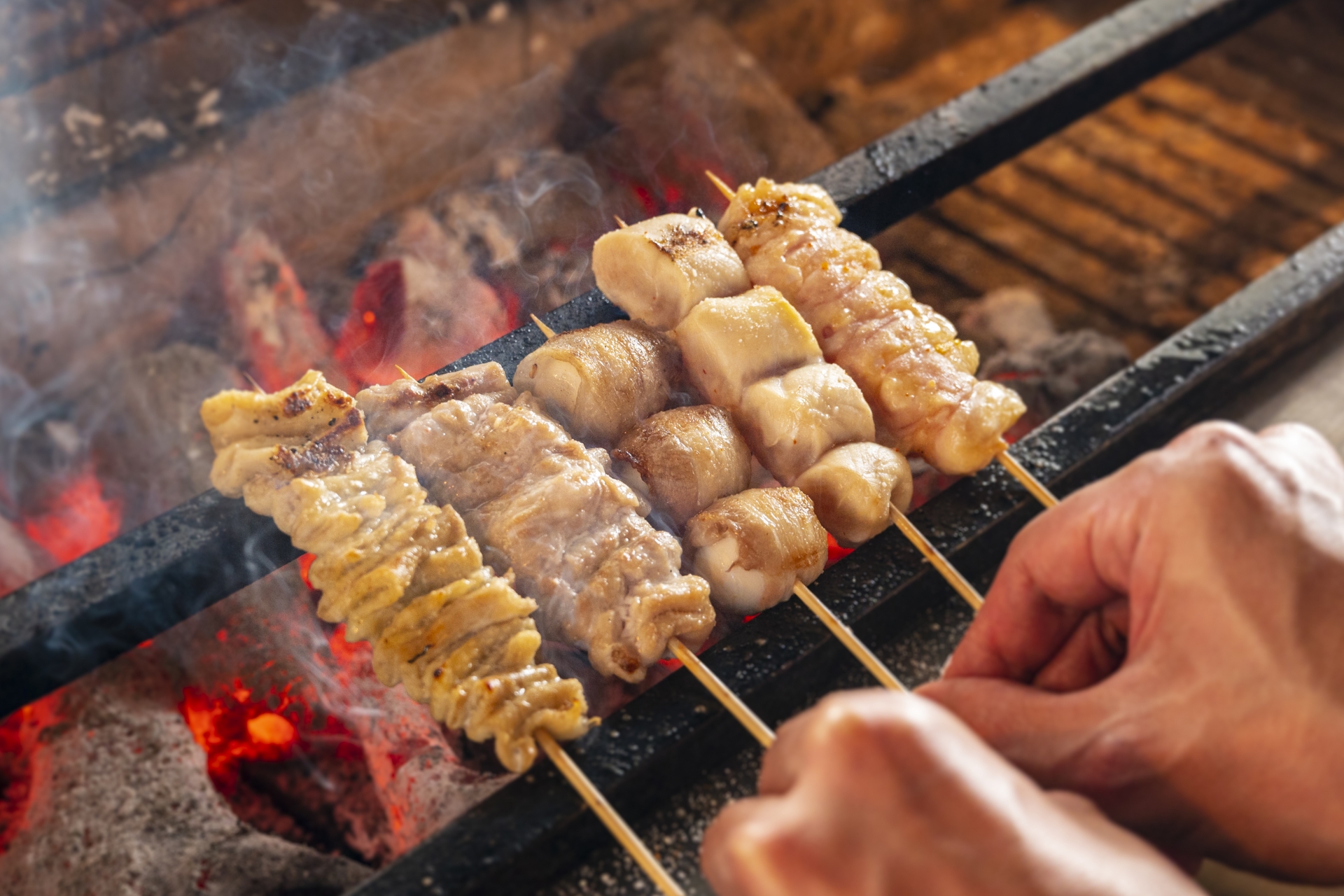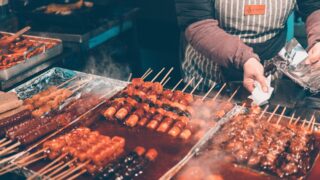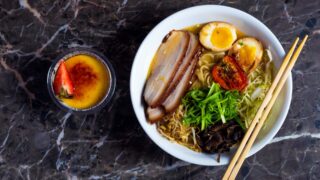
Mao Goto is a Japanese freelancer who was born in Hayama, Kanagawa prefecture, and raised in Tokyo. Since 2016 she lives in the Taito Ward, home to a lot of Japanese culture hotspots such as Asakusa, Akihabara, and Ueno. She has been interested in the field of English education in Japan and got her Master’s degree in March 2020. A lover of photography, travel, sweets, and cross-stitch. Contact her via Facebook.
This post may contain some affiliate links. When you click through and make a purchase we may receive some commission, at no extra cost to you.
Have you ever seen people grilling chicken on skewers in a narrow alley or in a busy Japanese izakaya, with the faint aroma of charcoal wafting in the air? Yes, that is yakitori. It is one of the most popular traditional Japanese street food, and it is also one of the most common dishes eaten as a snack with alcohol. It is not just grilled chicken; as it is usually seasoned with salt or sauce, and the flavor that hits your mouth when you take a bite is exceptional. In this article, we will introduce in detail the origin of yakitori, its varieties, and how to eat it.
What is Yakitori?
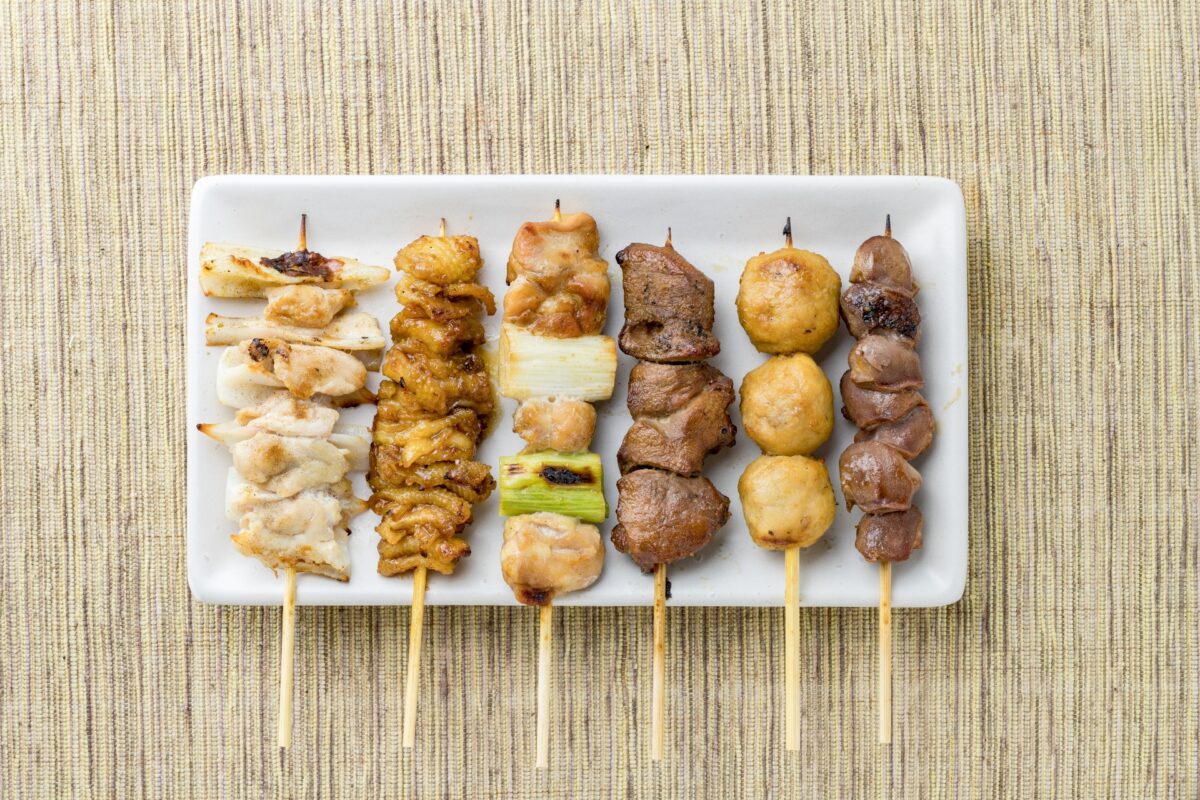
Yakitori is a Japanese street food consisting of cut meat seasoned in various ways and grilled over charcoal. Two types of tare (sauce) are commonly used: a richly flavored liquid tare made with soy sauce and sugar, and a simple salty tare. Although the word “tori” (chicken) is in the name, some regions also use meats other than chicken such as pork or beef offal. The ingredients for yakitori vary from region to region, and the variations are symbolic of the richness of Japan’s food culture.
History of Yakitori
The history of yakitori is long and its details are described in a book from the Kamakura period. This book, “Tsurezuregusa,” describes an early form of Yakitori in which a dish of roasted pheasant is made. In the middle of the Edo period, a method of cooking chicken on a skewer was described, which is thought to have been the prototype for today’s yakitori. Yakitori became more of a popular food in the late 1950s, when broilers were introduced from the United States and rapidly became popular. The number of popular yakitori restaurants increased, and yakitori has since then become a popular dish among the general public.
Where to get yakitori
⑴ Yokocho
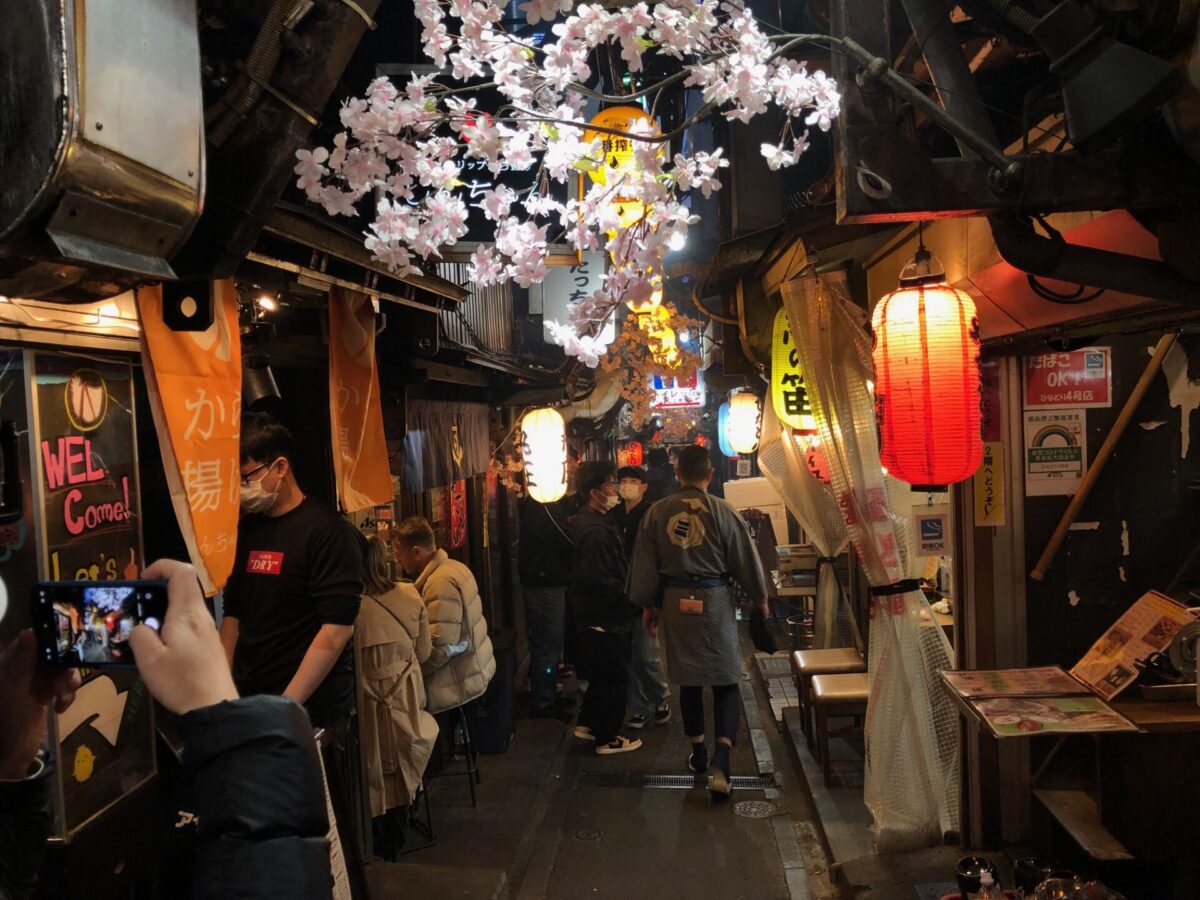
Yokocho refers to a street with a series of small restaurants and eateries, usually in secluded alleys. Here, izakaya and yakitori restaurants are crowded together, creating a lively atmosphere. It is especially common to see businessmen stopping by on their way home from work to enjoy a beer while munching on yakitori. Yokocho is a popular place for people to relax and unwind after a hard day’s work.
⑵ Izakaya
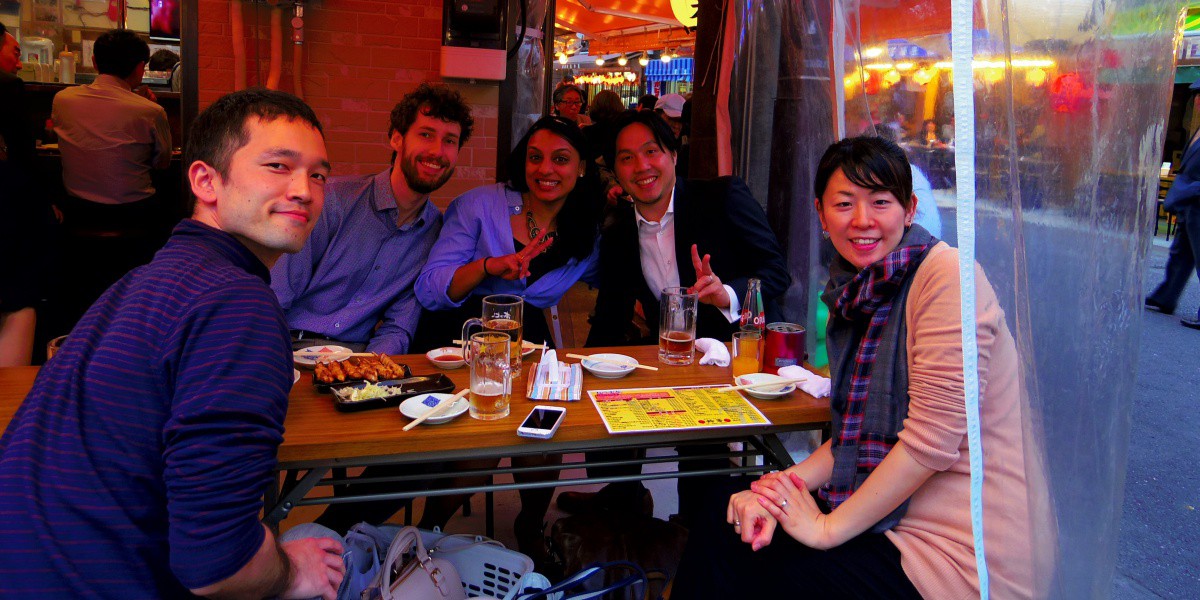
Izakaya are restaurants for the masses that serve alcoholic beverages like sake and shochu, as well as Japanese food. They range in size from large chain restaurants to privately owned stores. Many izakaya offer a yakitori menu, which is very popular.
⑶ Yakitori Speciality Restaurants
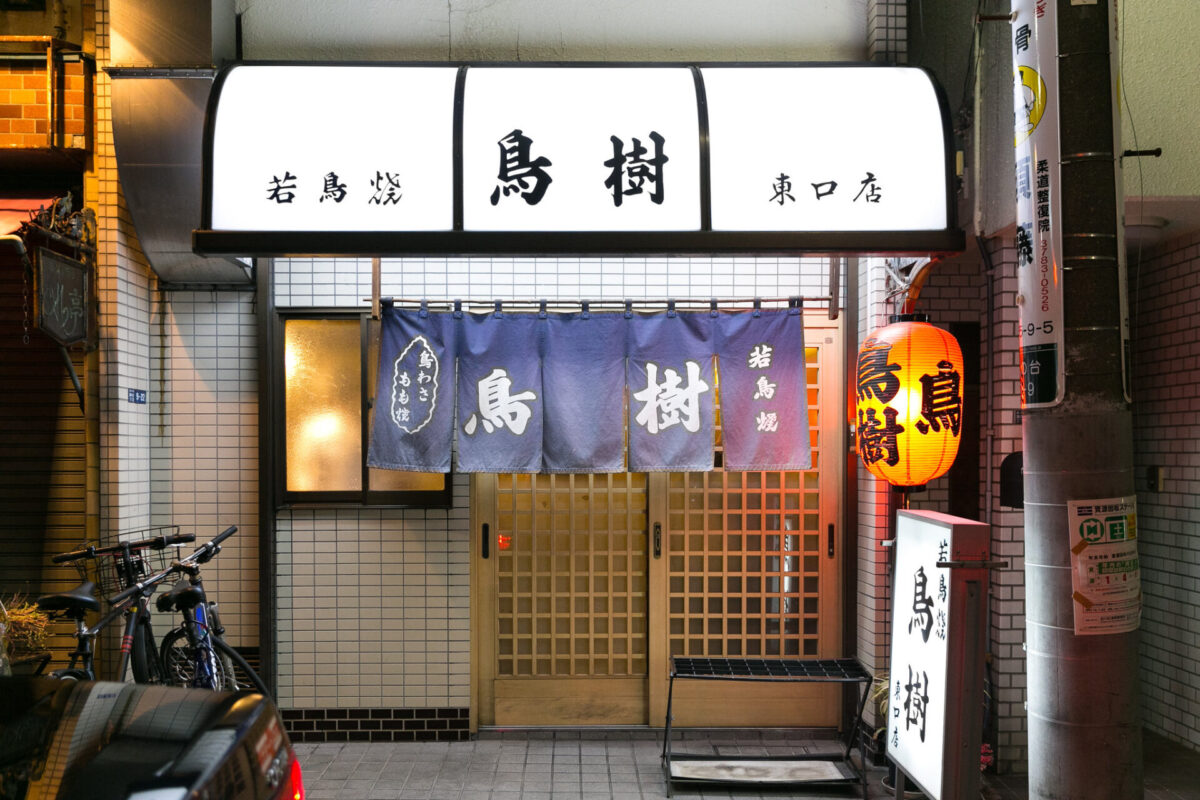
For an authentic taste of yakitori, a yakitori specialty restaurant is the place to go. These restaurants use specially selected meat, and usually have some kind of secret sauce for their Yakitori. Some restaurants are so popular for their flavor that you may end up eating several pieces of yakitori because of how delicious it is. If you want to fully enjoy the appeal of yakitori, visit a yakitori specialty restaurant.
Popular Yakitori Types
Here we will introduce some of the popular types of yakitori in Japan! These are just some examples and if you visit a yakitori speciality restaurant, you can find more types! Find your favorite taste there!
- Momo
Momo is located at the base of the chicken leg, and is arguably the most typical part used for yakitori. It is characterized by its fatty, plump, lean meat and fatty flavor. It is considered one of the most popular items on the yakitori menu because of its tenderness and the richness of the chicken. This is a standard option for yakitori.
- Tsukune
Tsukune is a type of yakitori made from minced chicken meat, such as momo, and shaped into dumplings. Because of its shape, it is sometimes also called “dango”. Generally, only minced chicken meat is used, but some yakitori restaurants offer a different type of yakitori with green shiso for a refreshing taste, which is also popular.
- Negima
Negima refers to a type of yakitori in which chicken and green onions are skewered alternately. By eating the meat and negi (Japanese leek) together, the juices and sweetness of the negi spread in the mouth at the same time, making it a very popular type of yakitori menu item. The rich umami of the chicken thigh and the refreshing taste of the negi combine perfectly, and the flavor is irresistible.
(4) Bonjiri
Bonjiri refers to the triangular piece of meat attached around the butt bone of a chicken. It is a rare part of the chicken, and only a few can be obtained from a single bird, which is why it is so popular. Bonjiri yakitori is characterized by its crispy surface, high fat content, and rich flavor.
(5) Nankotsu
If you are looking for a light portion of yakitori, we recommend nankotsu. Nankotsu is located at the tip of the chicken breastbone, and is a rare part of the chicken, with only one nankotsu taken from each chicken. It is characterized by its light flavor and crisp texture, and is often served as fried food as well as yakitori in restaurants such as izakaya. It’s easy-to-eat and refreshing flavor is loved by many people.
(6) Mune
One of the most attractive parts of the yakitori is mune. This part of the chicken, from the base of the wing to the shoulder, is low in fat and has almost none of the odor characteristic of chicken meat. Furthermore, it is rich in protein, making it ideal for those looking to build muscle. Its texture is tender and its flavor melts in the mouth. For those seeking a health-conscious or well-balanced diet, mune meat is a must-have.
(7) Sasami
Sasami is the meat of the pectoralis minor muscle, which is located along the breastbone of the chicken, one on each side. While a normal chicken breast can yield 250 to 300 grams of meat per bird, two pieces of white meat weigh only 100 to 110 grams. Despite its small size, however, it is known as a protein-rich part of the meat. It is recommended for health-conscious eaters and those who want to build muscle.
(8) Tebasaki
Tebasaki is a part of chicken wing tips that goes well with beer and sake. You can enjoy two layers of texture: the juicy meat and the crispy skin. Because it is a valuable part of the chicken, only two wings can be obtained from each chicken, so it is often priced relatively high in the overall menu.
(9) Kawa
Kawa is a skewer with crispy chicken skin. The outside is savory and crispy, and the bite of the chicken skin gives it a chewy texture in the mouth. For a yakitori skewer, neck skin is most commonly used for kawa. Because of its high fat content, it is said that “most of the calories in chicken are in the skin,” but the rich sweetness and unique texture of the fat is what attracts many people to this part of the chicken.
(10) Seseri
Seseri is the meat around the neck of a chicken. Its name comes from the Kansai dialect word “seseritoru,” which means to remove the meat from the neck bone. Since it contains a lot of muscles that support the chicken’s neck, the meat is firm and tight. It is attractive for its plump elasticity and juicy fat. Once you try it, you will be charmed by its deliciousness!
(11)Liver
A liver part of the chicken is also popular for yakitori. Its unique taste and texture are characterized by its soft, fluffy texture and mild flavor. Liver is rich in iron and high in nutritional value, and eating it provides the body with the nutrients it needs. Its rich flavor also appeals well to adult taste buds.
(12) Heart
“Heart” aka “hatsu” is a part of yakitori that has a light and rich flavor. It is characterized by its light and refreshing flavor and has less odor than other hormones. It is also a highly nutritious part containing high levels of vitamin A, B vitamins, and iron, but it is also rich in fat. The elasticity and juicy flavor of the hatsu are irresistible.
(13) Sunagimo
Sunagimo is derived from a part of the chicken called “the gizzard”. This part is located in one of the chicken’s two stomachs. The gizzard is a mass of muscle and contains very little fat. Its characteristic crunchy texture is attractive and also used as a vegetable stir-fry ingredient.
(14)Shiromotsu
The last option here is one that is from pig instead of chicken. The variety of yakitori is not limited to chicken as already stated above, and this part comes from the large intestine. Shiromotsu has a peculiar odor and must be pre-treated by boiling before grilling. However, shiromotsu that has been pre-processed is firm, juicy, and spreads flavor and sweetness. Furthermore, its rich flavor stands out when eaten with sauce.
In this article we have mentioned the appeal of yakitori, but is there a type of yakitori that you would like to try? You must have felt the depth of Japan’s food culture, with the variety of parts and flavors you can choose from. Yakitori is one of the dishes you must try when you visit Japan. We encourage you to try a variety of yakitori the next time you visit Japan and it will surely open up a new world of food for you.
Japan Wonder Travel Tours
Japan Wonder Travel is a travel agency that offers guided tours throughout Japan.
From private walking tours to delicious Food and Drink tours, we can help you organize the best tours just for you! If you want to explore Japan and learn more about the history and backstories of each area you are visiting, our knowledgeable and friendly English speaking guides will happily take you to the best spots!
In addition, we can provide you with any assistance you may need for your upcoming trip to Japan, so please feel free to contact us if you have any questions or need some help!
▶Tokyo Tsukiji Fish Market Food and Drink Tour
Explore the most lively and popular fish market in Tokyo and try some of the local’s favorite street foods and sake with one of our friendly and knowledgeable English speaking guides!

▶Tokyo 1–Day Highlights Private Walking Tour (8 Hours)
There’s no better way to explore an area than taking a tour with a knowledgeable local guide. You will have the chance to learn about the history and interesting background stories of Tokyo, as well as discover some hidden gems which can be hard to do without a guide.

▶Mt. Fuji Day Trip Bus Tour from Tokyo
Experience the breathtaking views of Mt. Fuji by visiting the highlights of the area on our guided sightseeing bus tour! Departing from Shinjuku in central Tokyo, you can travel comfortably to all of the best spots in the area by bus.

▶Kyoto Private Full Day Walking Tour
On this full-day private tour of Kyoto, you will be able to see the highlights of Kyoto in just one day and at the same time develop a deeper understanding of both the culture of the area and Japan as a whole.

Follow us on Instagram, Facebook, Twitter, and TikTok for more travel inspiration. Or tag us to get featured!
Happy traveling!
